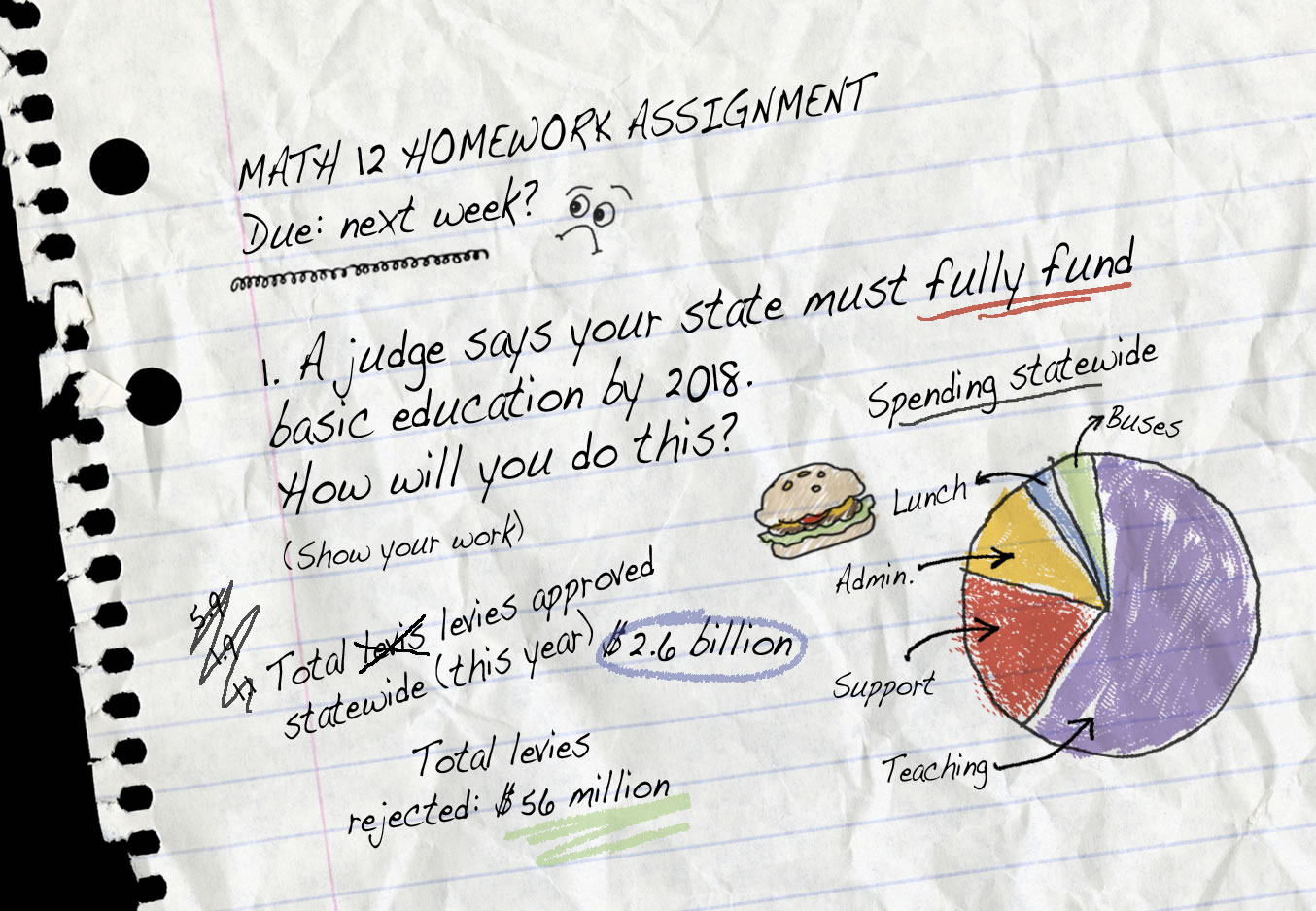But although the new system is more transparent, questions remain about what exactly the state will pay for and if that’s enough. It also remains to be seen if today’s promises are kept six years from now.
Defining what it means to amply fund basic education is anything but basic, as school systems have many moving parts.
So many programs
Schools operate under a plethora of regulations. They must comply with federal, state and local rules on learning goals and procedures.
Many of those rules are enforced through the purse strings, i.e. money is awarded or withheld depending on a school district’s compliance with certain regulations.
And the state must dish out money to the 295 districts in a way that reflects each local agency’s demographics, size and unique challenges.
As a result, the Office of the Superintendent of Public Instruction — which administers the disbursement of money to the districts — has to keep an eye on 17 financial programs that rely on funding formulas, 25 state grant programs, 25 federal grant programs and many other programs under contracts between OSPI and individual school districts, according to OSPI documents.
Changing rules
From the 1970s until last summer, much of state school funding was determined by a formula based on student counts. Districts several times per year took snapshots of how many full-time students they housed.
OSPI calculated an average annual enrollment from those numbers for each district. State law provided ratios of how much staff should be hired per 1,000 students and how much they ought to be paid.
It also outlined how much money for utilities and supplies schools should get per staff member. All that added up to schools receiving about $5,500 per student in recent years.
But last September, a whole new funding model went into effect. Instead of lumping together teachers, librarians, counselors, nurses and others as “certificated staff,” as the old rules had done, the new model gives exact ratios of how many employees it pays for in each kind of job found in a school.
It also sets different class sizes for different grades.
It bases these numbers on a so-called prototype school of a certain size — 400 for K-6; 432 for 7-8; and 600 for 9-12. The model can then be scaled up or down for actual schools smaller or bigger than the model school.
The new model is expected to create more transparency in the state funding mechanism, because it allows districts to point out exactly which positions the state is paying for and if it’s paying enough.
The prototype model is part of a new law that came out of previous court rulings and committee findings.
Relying on levies
The earliest lawsuit about school finances referenced in the recent McCleary decision is Seattle Public Schools v. State of Washington. In 1975, about one-fourth of Seattle’s school budget came from local levies. A decade earlier the levy had made up only a small fraction of the budget. When the ’75 levy election failed, the Seattle district sued the state, claiming the state had neglected its constitutional duty to amply fund education.
In 1977, the Legislature enacted the Basic Education Act. It outlined broadly worded goals of what students should learn in school, set how long they should be in school each year and defined the per-1,000 funding formula.
The Legislature in the same session also passed the Levy Lid Act, which determined that districts could raise only 10 percent of their budgets through local levies — state and federal money had to provide for the rest of their expenses.
That lid has been raised numerous times. It now stands at 28 percent, higher than it was when Seattle sued.
Other states have it worse: In Illinois, Nevada and South Dakota, the state provides less than one-third of districts’ revenue. Most district money comes from levies there, which creates inequality between students in rich and poor communities.
Changing expectations
Courts and government committees have changed the definition of basic education over the years.
Basic ed came to include the programs described in the original Basic Education Act, plus special education, some busing, remediation for students from disadvantaged backgrounds, teaching English to non-English-speakers and programs for incarcerated juveniles.
In the early 1990s, the education system changed from one that was largely defined by the amount of time students spent in the classroom to one that prescribed what skills students should have at graduation.
Over the years, private-public committees have repeatedly found that the state’s funding models didn’t reflect ever-increasing expectations put on schools.
The new model came with a schedule that shows full funding for several key areas by 2018.
But it may leave districts short nonetheless, as staffing numbers in place under the model now are insufficient, local district officials have said.
Jacques Von Lunen: 360-735-4515; http://twitter.com/col_schools; jacques.vonlunen@columbian.com.



